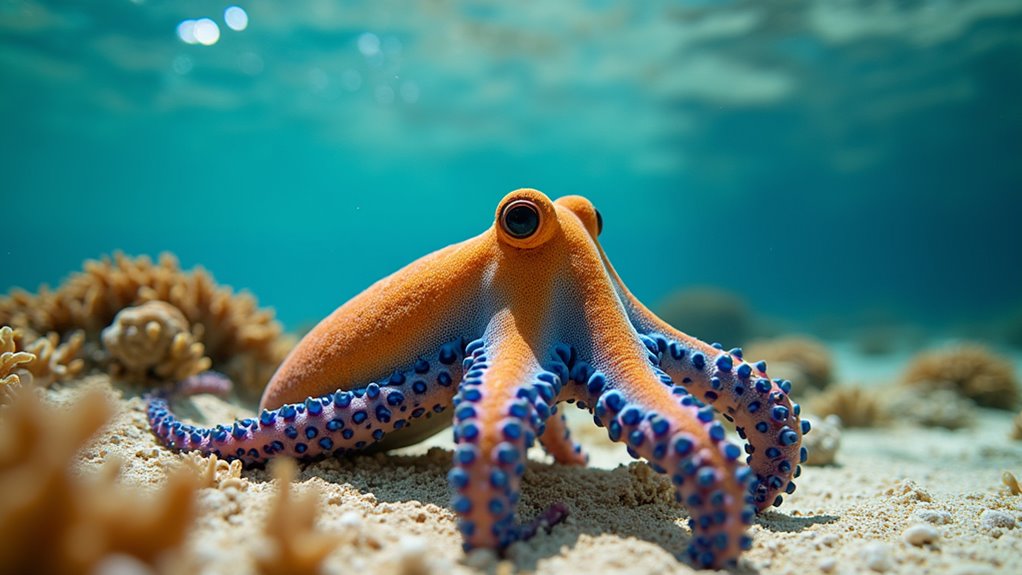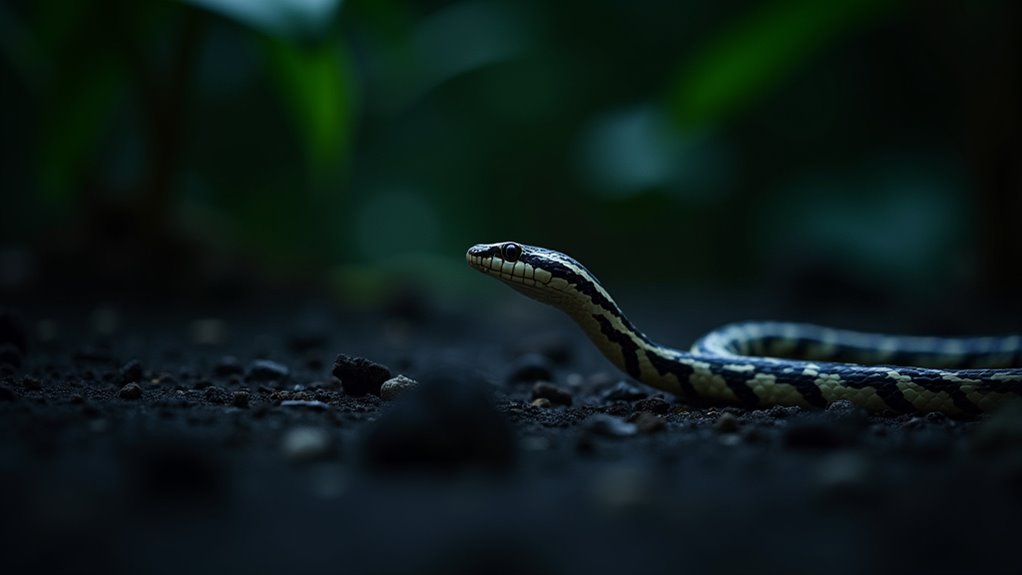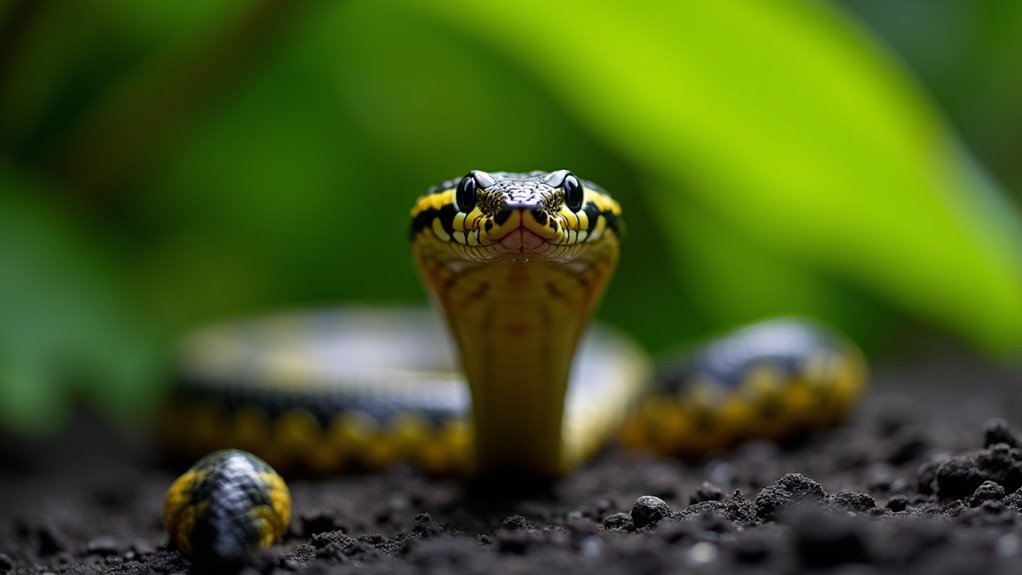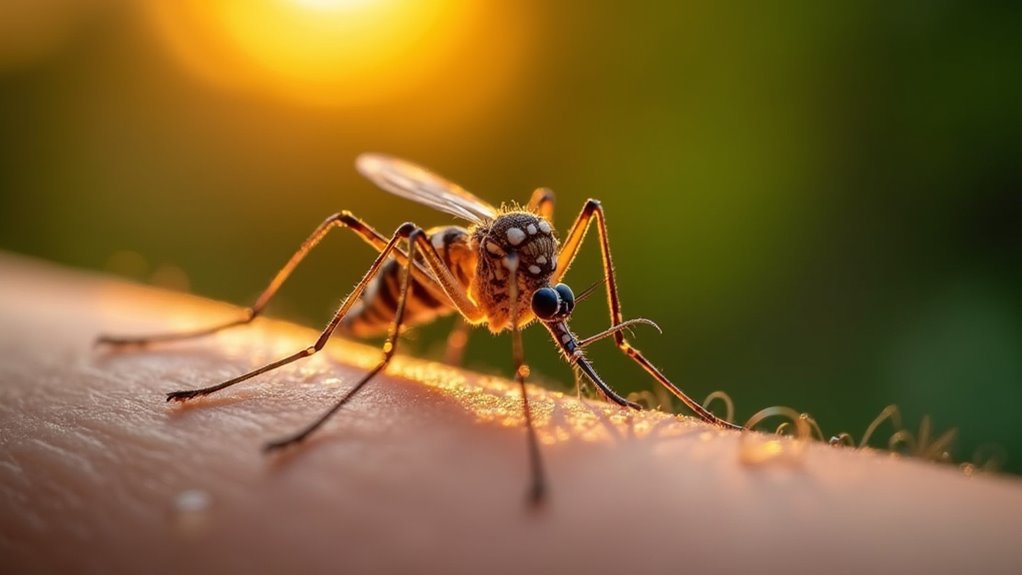Physical Address
304 North Cardinal St.
Dorchester Center, MA 02124
Physical Address
304 North Cardinal St.
Dorchester Center, MA 02124

Animals lurking in Bali's paradise can turn your dream vacation deadly – which creatures should you avoid?
When you’re planning your dream Bali getaway, wildlife dangers probably aren’t on your packing checklist. Yet this Indonesian paradise harbors several potentially deadly creatures you’ll need to watch for. From venomous snakes that can kill within hours to disease-carrying mosquitoes and aggressive temple monkeys, understanding these threats isn’t about fear—it’s about preparation. While most travelers return home with nothing but beautiful memories, knowing what lurks in paradise might just save your life.

Among Bali’s most dangerous creatures, the Malayan Krait is prominent as a particularly lethal presence. This glossy blue-black snake with distinctive white or pale blue bands is found throughout Bali’s forests, plantations, and even near human settlements.
The deadly Malayan Krait, with its glossy blue-black scales and white bands, lurks throughout Bali’s diverse landscapes.
You’ll need to be especially cautious at night, when these highly venomous snakes are most active. The Malayan Krait is considered one of the six dangerous snakes native to the island of Bali. Their potent neurotoxic venom can be fatal in 60-70% of untreated cases, causing muscle weakness that progresses to respiratory paralysis within hours. The krait’s venom contains powerful toxins that can be lethal with just 5 mg per bite.
If you’re exploring Bali after dark, always wear closed-toe shoes and use a flashlight.
Should you encounter one, don’t attempt to handle it. The Malayan Krait may appear docile but will bite defensively if threatened—and immediate medical attention is vital for survival.
While the Malayan Krait poses a significant threat, the King Cobra deserves equal caution as Bali’s most imposing venomous snake. Reaching up to 5.5 meters, this magnificent yet deadly serpent inhabits Bali’s dense forests and rural areas.
You’ll rarely encounter King Cobras as they typically avoid human contact, preferring the island’s humid, forested regions from sea level up to 2,000 meters.
When threatened, they display their distinctive hood and can deliver potent neurotoxic venom through their fangs.
If you’re exploring Bali’s wilderness, avoid dense undergrowth where these serpents may hide. Though they primarily hunt other snakes and generally shy away from people, always maintain a safe distance if you spot one. Locals refer to this impressive creature as Ular Raja Kobra in Balinese.

Although not native to Bali, the spitting cobra represents one of nature’s most fascinating defensive specialists with its unique venom-spraying ability. These remarkable serpents can accurately project venom up to 3 meters away, targeting your eyes and face with startling precision.
Their venom is specifically evolved to cause intense pain upon contact with mucous membranes. The venom contains high levels of phospholipase-A2 enzymes that work synergistically with other toxins to maximize pain induction. If it reaches your eyes, you risk temporary or even permanent vision loss without prompt treatment.
The cobra’s specially adapted fangs and head oscillations allow them to track your movements and adjust their aim accordingly.
While you’re unlikely to encounter one in Bali, understanding their behavior is valuable knowledge for any traveler. If confronted, seek immediate medical attention for any venom exposure to prevent serious complications. These snakes are among Bali’s wildlife hazards that travelers should be aware of when exploring the island’s diverse ecosystems.
Bali’s coastal waters harbor an often-overlooked danger that surpasses even the cobra’s threat: sea snakes. While exploring Bali’s marine environment, you’ll potentially encounter two highly venomous species: the Yellow-Bellied Sea Snake and the Banded Sea Krait, identifiable by its distinctive black and white bands.
Despite their lethal neurotoxic venom, which can cause paralysis and respiratory failure, these serpents rarely attack humans unprovoked. They’re naturally shy and prefer to avoid contact. You’re most likely to encounter them while diving or snorkeling around coral reefs. With highly potent venom, sea snakes are among the most venomous snakes globally, though their bites are often painless and may initially go unnoticed.
If you spot a sea snake during your aquatic adventures, maintain a safe distance and observe without disturbing.
The Banded Sea Krait occasionally comes ashore to lay eggs, so remain vigilant on beaches near reef areas. These dangerous creatures are rarely seen in the luxury beaches of Nusa Dua, making it a safer option for swimmers concerned about marine hazards.

Among the various marine dangers in Bali’s waters, box jellyfish stand out as particularly lethal yet nearly invisible threats. These translucent predators, with their distinctive cubic shape and 24 eyes, primarily appear during wet season near river mouths and estuaries.
While encounters in Bali are rare, their venom is potentially deadly, causing severe pain, nausea, and respiratory distress. If stung, immediately douse the area with vinegar and seek medical attention.
To stay safe, swim in designated areas, heed local warnings, and avoid waters near river mouths, especially after rainfall. Travelers visiting Bali on a 30-day tourist visa should be particularly cautious when swimming in unfamiliar waters. Visitors can also consider visa extensions if they wish to stay longer and explore Bali’s safer beaches during different seasons.
Box jellyfish typically avoid coral reefs and areas with abundant sea life, preferring to drift inshore with rising tides. Though deadly, fatalities are uncommon when proper precautions are taken.
Lurking beneath the sand of Bali’s most picturesque beaches, stonefish represent one of the ocean’s most perfectly camouflaged threats. These masters of disguise, growing up to 16 inches long, blend seamlessly with rocks and coral reefs throughout Bali’s shallow waters.
Don’t be fooled by their stationary appearance—stonefish possess the deadliest fish venom known, delivered through 12-14 venomous dorsal spines. A single step can trigger excruciating pain, tissue death, and potentially fatal cardiovascular complications without rapid treatment. Their tough, wart-covered skin helps them remain virtually invisible as they wait for prey or unsuspecting human feet.
To stay safe, always wear thick-soled shoes when wading, avoid touching the seabed, and shuffle your feet while walking in shallow waters. Unlike the vibrant Balinese cuisine that attracts travelers to the island, these creatures offer nothing but danger to unsuspecting visitors.
If stung, immerse the affected area in hot water (45°C) and seek immediate medical attention for antivenom—your life may depend on it.

While stonefish hide beneath the sand, temple monkeys boldly display their aggressive tendencies throughout Bali’s religious sites. You’ll encounter these macaques primarily in temple complexes, where they’ve adapted to human presence—often detrimentally.
Adult males are particularly combative, especially when food is involved. These monkeys typically live in social groups consisting of multiple females, their offspring, and at least one dominant male. They’ll snatch bags, glasses, and any items resembling food containers. Don’t be fooled by their size; these primates cause hundreds of aggressive incidents annually, many requiring medical attention.
Never feed them or attempt selfies, as these actions trigger confrontations. Unlike the gentle approach of Balinese massage, these monkeys use touch as a means of intimidation and theft. If approached, avoid eye contact and back away slowly. The risk extends beyond bites and scratches to potential disease transmission.
Your best defense is maintaining distance and securing belongings, particularly at popular sites like Uluwatu and Ubud Monkey Forest.
Bali’s stray dogs present a far deadlier threat than the temple monkeys that hassle travelers for snacks. Since 2008, the island has battled a significant rabies outbreak that has claimed over 150 human lives and cost the government more than US $13 million.
While Bali’s monkeys harass for food, its stray dogs carry a much darker danger: deadly rabies.
With 268 positive rabies cases and five human deaths reported in 2024 alone, the danger is real and present. Bali’s high density of dogs (400,000-800,000) creates perfect conditions for rabies transmission.
If you’re bitten, seek immediate medical attention for post-exposure treatment. Avoid interacting with stray animals during your visit, and report any bites to local authorities. Visitors should be especially cautious when running or cycling near stray dogs, as this can trigger chase instincts.
While exploring the Island of the Gods, maintaining proper awareness of your surroundings is essential for a secure and enjoyable trip.
This simple precaution could save your life, as rabies is nearly always fatal once symptoms appear.

Though they may seem like a mere nuisance, mosquitoes represent Bali’s most persistent and widespread health threat to visitors. Dengue fever dominates the concern list, with Bali reporting Indonesia’s highest incidence rates and a significant surge in 2024, particularly in tourist hotspots like Canggu and Uluwatu.
All four dengue serotypes circulate on the island, primarily transmitted by Aedes aegypti mosquitoes that bite during daylight hours. Your risk increases in densely populated areas like Denpasar and Badung Regency. Mosquito activity tends to peak during dawn and dusk when travelers are often exploring outdoor attractions or dining al fresco.
Don’t underestimate these tiny predators – Bali’s tropical climate enables year-round mosquito breeding. Fortunately, the World Mosquito Program is making remarkable progress with their Wolbachia method to suppress mosquito populations and reduce disease transmission. Protect yourself by using repellents, wearing long clothing, and eliminating standing water near your accommodation.
Secondary infections carry higher risks of severe symptoms, so vigilance is essential throughout your stay.
You’ll most likely encounter these nocturnal predators hiding under rocks, in leaf litter, or sometimes in your bathroom. Though rarely fatal, their bites cause severe burning pain, redness, and swelling that can last for hours.
When exploring Bali’s natural areas, always check your shoes before wearing them and be cautious when reaching into dark spaces. Bali is home to the Pacific Giant Centipede, scientifically known as Scolopendra subspinipes. If bitten, applying cold water helps manage the pain, but medical attention is seldom necessary. If you’re staying in tsunami prone areas, be especially vigilant as these creatures may seek higher ground during seismic activity.
Despite their fearsome reputation, these creatures actually help control insect populations throughout the island.

While generally less common than centipedes, scorpions are another venomous creature you might encounter during your Bali travels. The island hosts several species, including the imposing Asian Forest Scorpion, which can reach 15 cm in length.
Though their stings aren’t typically life-threatening, they can cause severe pain, swelling, and discomfort. Bali is home to only three species of scorpions found across the island’s diverse habitats.
The Bark Scorpion and tiny Dwarf Wood Scorpion are also present, though you’re less likely to spot the latter.
To avoid unwanted encounters, always check your shoes before wearing them, inspect bedding, and wear proper footwear when exploring forested areas.
If stung, seek medical attention to manage symptoms, especially if you have allergies.
Remember that scorpions typically prefer hiding under stones, logs, and in dark crevices. Travelers planning to journey by land from Bali to Jakarta should be particularly cautious when making stops in rural or forested areas along the route.
Bali’s paradise holds hidden dangers that lurk like shadows beneath its beauty. You’ll enjoy your Indonesian adventure more by respecting these natural threats. Keep your wits about you, don’t provoke wildlife, and carry basic medical supplies. Remember, prevention is your strongest shield. If you’re bitten or stung, don’t wait—seek medical help immediately. Paradise comes with perils, but awareness is your trusty compass through Bali’s wild side.